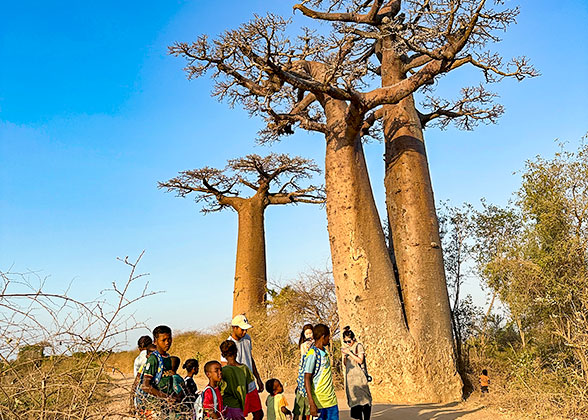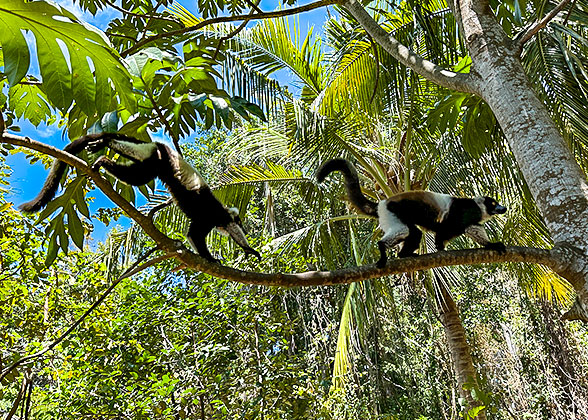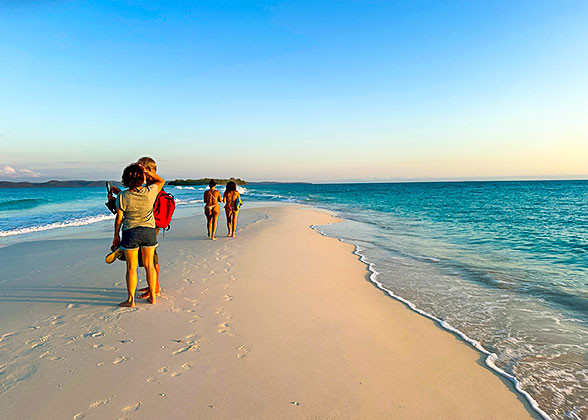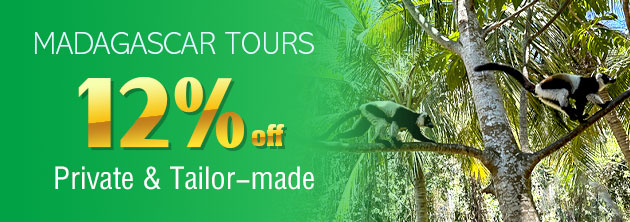Nosy Be Weather
Nosy Be has a tropical monsoon climate with no obvious variation in temperature throughout the year. It only has a dry season and a rainy season based on its fluctuating rainfall. The dry season lasts for 7 months, from April to October, and the other months belong to the rainy season.
In all, Nosy Be has warm and comfortable weather, which is part of the reason why it attracts countless global visitors each year.
![]() See also: Madagascar Weather
See also: Madagascar Weather
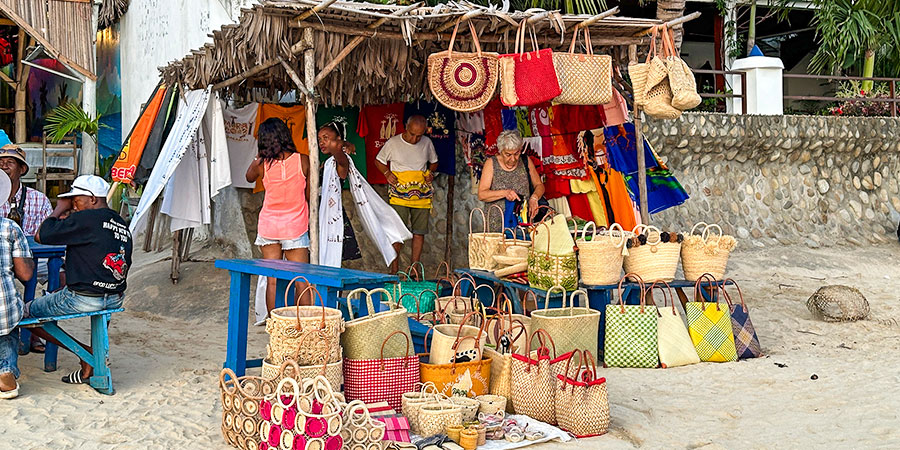
Stalls on the Beach of Nosy Be
|
In addition, if you’re attracted by local music and culture, May is your first choice. This is the time when Nosy Be holds a fabulous music festival. Many islands in Nosy Be are infested with sea turtles. They lay eggs between April to August. If you want to see new-born sea turtles, this period is the best for you. Interested in whales? August or September is perfect for you.
However, if you plan to go to Nosy Be in 2025, the rainiest time of the year - December, January, and February, are not recommended.
Rainy Season: November to March
 Average Temperature: 26 - 28°C (78.8 - 82.4°F)
Average Temperature: 26 - 28°C (78.8 - 82.4°F) Average Rainfall: 1,236 mm
Average Rainfall: 1,236 mmThe weather of Nosy Be in the rainy season can be unpredictable. There’re still sunny days, but visitors will come across strong rain showers from time to time. The rainiest period starts in December and ends in February. The highest monthly average precipitation during this time can reach 400 mm or more. It rains much less in Nosy Be if you come when the rainy season just comes or when it is about to go.
 Travel Recommendations:
Travel Recommendations:
Despite the high precipitation, the vegetation in the rainy season tends to be more luxuriant. In addition, you can still have great experience on some sunny days. For example, some endangered species of lemur can only be seen in Nosy Be’s Lemuria Land and Lokobe National Park. It’s also great to go on an excursion throughout Nosy Sakatia to see rare wild orchids and lazy sea turtles. And then go sea fishing off the main island.

Lemurs of Nosy Be
|
Dry Season: April to October
 Average Temperature: 25 - 27°C (77 - 80.6°F)
Average Temperature: 25 - 27°C (77 - 80.6°F) Average Rainfall: 277 mm
Average Rainfall: 277 mm
During this time, the temperature is slightly lower than in the rainy season, and you can feel it, especially when strolling on the beach at night. When it comes to rainfall, it doesn’t rain too much at this time. Usually there are no more than 8 rainy days in a month. Generally speaking, the temperature still remains warm but the precipitation drops a lot in dry season.
 Travel Recommendations:
Travel Recommendations: What attracts you the most may be snorkeling under water with coral reefs, sea stars, tropical fish, and sea turtles in Nosy Tanikely. Climbing to the highest Gustave Eiffel Tower to enjoy the 360° view of the whole Nosy Be Island will also give you a breath-taking experience. The most beautiful and stunning view must be the stretch of white beach between Iranja Be and Iranja Kely. The jelly-like ocean with snow-white sands contribute to an incomparable scenery.

Beach between Iranja Be and Iranja Kely
|
Tips:
1. Make foolproof UV protection since the sun rays in Nosy Be are super strong. You definitely need to apply extra sunscreen and wear a sun hat. A pair of sunglasses is also a reliable companion.2. Bring an umbrella with you in case it suddenly rains.
3. Mosquito-repelling spray is also a must.
4. Even with easy access to wildlife, touching sea turtles, lemurs, or chameleons is still not advised. Please ask your guide first.
5. In the peak season, be sure that you make reservations way ahead of schedule.


